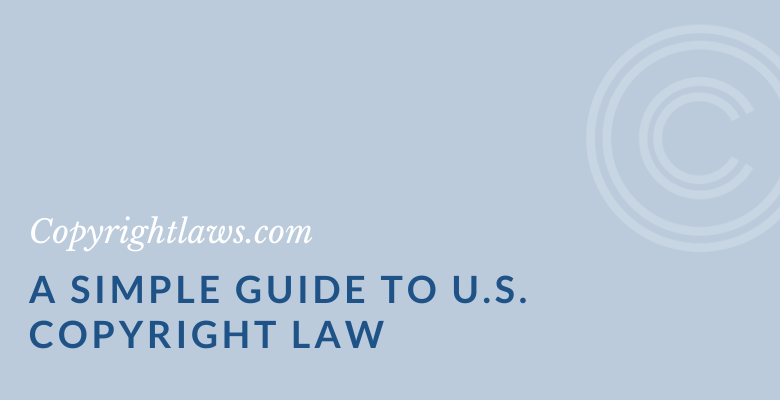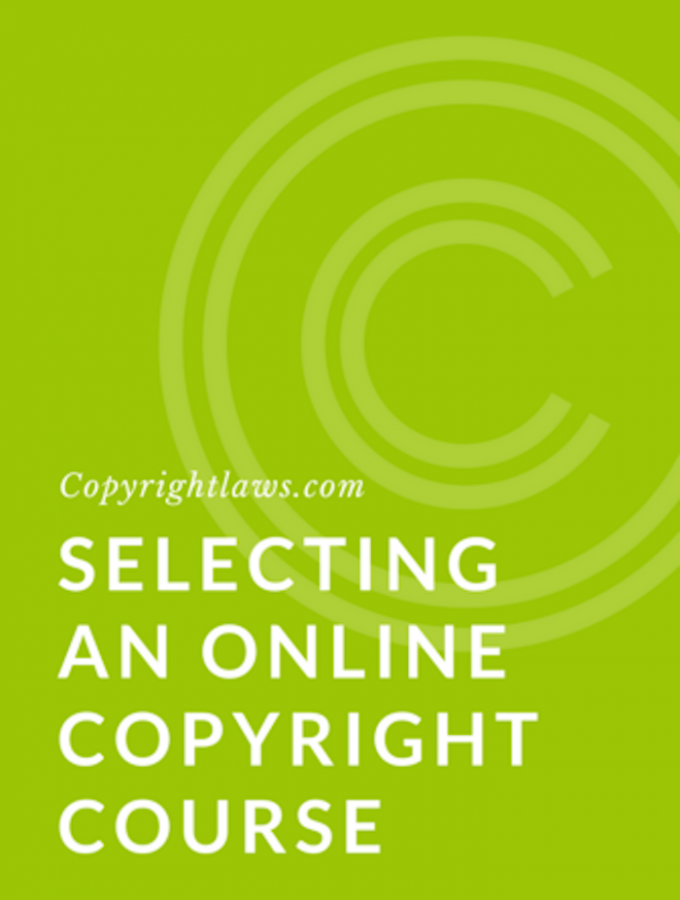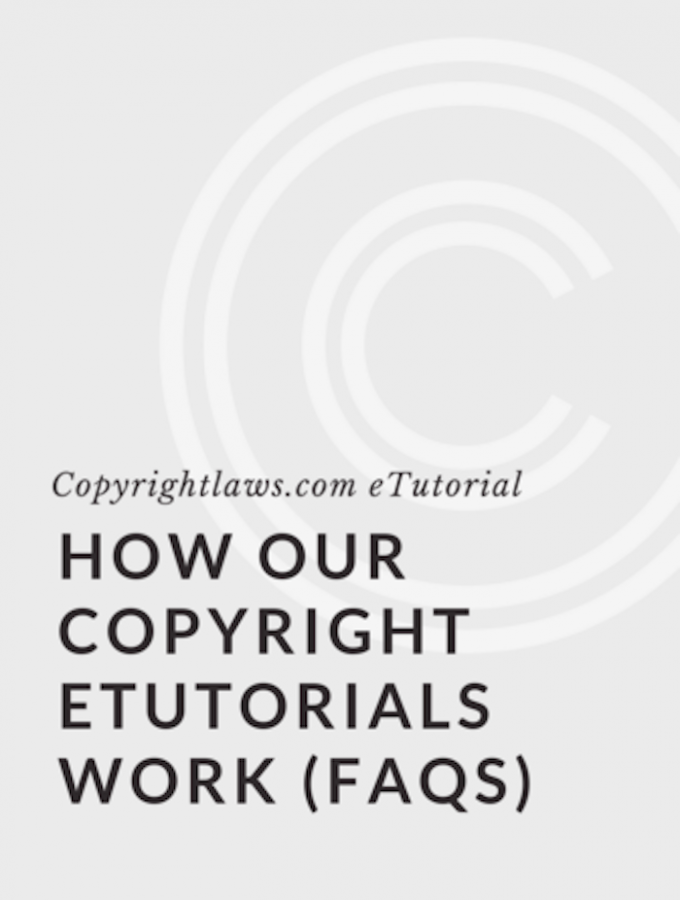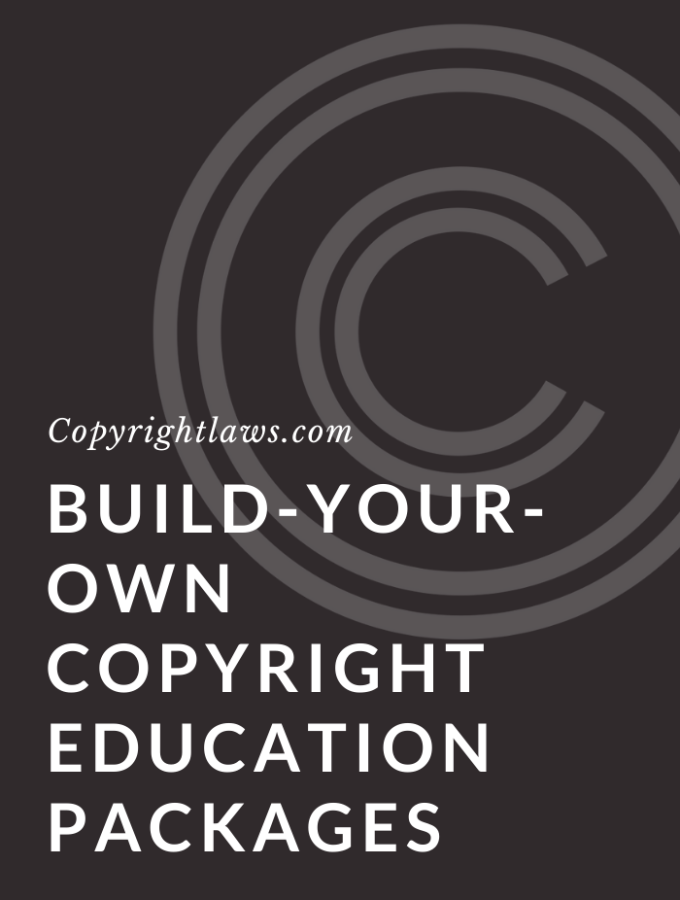
U.S. Copyright Law Basics
Anyone dealing with issues related to copyright and licensing in the U.S., whether creators or users of copyright-protected materials, needs a basic understanding of U.S. copyright law. What rights are covered under copyright? Who owns copyright in a work? And how long does copyright last? This simple guide to U.S copyright law basics will help you answer these questions and more.
If you need more than basic knowledge, our many more in-depth articles will give you a deeper understanding of specific aspects of copyright law in the U.S.
As a bonus, complete the form at the end of this article to download the PDF A Simple Guide to U.S. Copyright Law: Essential Facts and Tips.
Copyright Law: The Legal Background
The U.S. Constitution grants Congress the power to enact a federal system of copyright laws.
The Congress shall have Power … To promote the Progress of Science and useful Arts, by securing for limited Times to Authors and Inventors the exclusive Right to their respective Writings and Discoveries …
Article I, Section 8 of the U.S. Constitution
Although a federal statute governs copyright law, there are also some state laws on copyright that deal with issues not covered by the federal law.
When Was the U.S. Copyright Act First Enacted?
Copyright law is part of a larger body of law called intellectual property. The first federal copyright law was enacted in 1790. Since that time, there have been four general revisions of the copyright law, in 1831, 1870, 1909 and 1976. There have also been a number of amendments to the copyright statute.
The following are two recent notable changes to the Copyright Act:
- In 1998, The Sonny Bono Copyright Term Extension Act extended the duration of copyright for most types of protected works from 50 to 70 years after an author’s death
- In 1998, The Digital Millennium Copyright Act allowed the U.S. to join the two new digital copyright treaties, bringing the U.S. up to international standards vis-à-vis digital copyright issues
The Role of the U.S. Copyright Office
The U.S. Copyright Office has the following roles:
- Administering the Copyright Act, including overseeing the administration of copyright registrations.
- Creating and maintaining a public record of copyrights registered in the Copyright Office.
- Providing technical assistance to the Congress and Executive Branch agencies. The Office provides policy advice on copyright issues, drafts copyright legislation, comments on proposed legislation, and prepares studies on copyright issues.
- Providing information services to the public, both U.S. citizens and others around the world.
- Supporting the Library of Congress. Copyright works registered in the Copyright Office are deposited in the Library of Congress. The Library and Office work closely together on many projects, including the current program to register and deposit works electronically.
The U.S. Copyright Office has a wealth of informational materials on U.S. and international copyright law, as well as a searchable index to fair use court cases.
The Creator Is Generally the First Owner of Copyright
The general rule of ownership is that the first owner of copyright is a work's creator or author. This is subject to a number of exceptions. One such exception is the “work for hire” provision under which employers are, under certain conditions, the author and owner of copyright in works created by employees during the course of their employment.
The Rights of Copyright Owners and Their Limitations
Copyright literally means "the right to copy." The United States Copyright Act grants certain rights to authors of “original works of authorship” including literary, dramatic, musical, architectural, cartographic, choreographic, pantomimic, pictorial, graphic, sculptural and audiovisual creations. Among rights, copyright owners have the exclusive right to reproduce, adapt, distribute and, in relation to certain works, publicly perform or display a work.
These rights are exclusive to the copyright owner, but they are not unlimited. The Copyright Act establishes certain limitations on these rights. These limitations may be in various forms. One limitation, fair use, is a defense to a claim of copyright infringement. Other limitations are called exceptions or exemptions because they allow specific uses of copyright-protected materials without obtaining permission from the copyright owner.
The rights set out in the Copyright Act give copyright owners control over the use of their creations, and an ability to benefit, monetarily and otherwise, from the exploitation of their works. Copyright also protects the rights of attribution and integrity (known as moral rights) for authors of works of visual art.
Copyright Does Not Protect Ideas
Copyright law does not protect ideas. This concept cannot be overemphasized. It is based on the notion that ideas are part of the public domain and no one can have a monopoly on them. Copyright law protects the expression of ideas, rather than the ideas themselves. Copyright protection also doesn’t extend to any history, fact, procedure, process, slogan, principle or discovery.
In practice, anyone may follow an idea set out in a book or an instructional video, or create a work based on the same idea, without violating copyright.
The concept also means that there can be copyright in two works expressing the same idea, since it’s the original expression of the idea that’s protected by copyright. For example, two people may independently make sketches of the same tree, each sketch being protected by copyright and neither of them violating the copyright of the other.
Copyright Protection is Automatic if Certain Criteria Are Met
Copyright protection automatically exists as soon as a work is created and fixed in a tangible medium of expression. Protection applies to works at any stage of creation (from initial drafts to completed works) and to published and unpublished works. For a work to be protected, it must meet three criteria:
- Originality
- Fixation
- Minimal creativity
Originality
In order for a work to be protected by copyright, it must be original in the copyright sense of the word. A creation need not be completely novel, nor does it have to possess some aesthetic, artistic or literary quality to be protected by U.S. copyright.
In fact, the standard of originality is very low. Basically, the work must originate from the author and must not be copied from elsewhere.
Minimal Creativity
Certain works aren’t protected by copyright because they consist entirely of public, common or factual information and they lack any original authorship.
This would include a standard calendar or a height and weight chart. Similarly, copyright does not subsist in things like titles and slogans, mere variations of lettering or color, or mere listings of contents.
Fixation
For a work to be protected, it must meet the criterion of fixation and be fixed in a “tangible medium of expression.” A tangible medium of expression includes any readily perceptible format, whether formal or informal. As well, it includes a format from which the work may be perceived only with the assistance of some device or technology.
This would include a handwritten letter or a sketched drawing on a napkin. It would also include a saved document on your computer’s hard drive or a flash drive, or a recording on a video camera.
In some cases a work may not be considered fixed. One example may be works such as lectures, speeches, addresses and sermons that have not been written down or recorded in some manner prior to their presentation. The same may be true of an improvised comedy skit, a jam session or an improvised tune. An unsaved image or text on a computer screen is not considered fixed. Note that some state copyright laws may protect non-fixed works in specific circumstances.
Publication, Notice and Registration Are Not Required
Under prior U.S. law, copyright protection was secured by publication of the work with the use of a copyright notice. This is no longer the case, and neither publication nor notice of copyright is required for one to obtain copyright protection for a work in the U.S.
Also, registration with the U.S. Copyright Office is no longer a prerequisite to copyright protection. The originality, fixation, and minimal creativity criteria determine whether a work will be protected by copyright. However, publication, notice and registration may be relevant to determining the copyright status of older works.
Although registration is not required for copyright protection, the Copyright Act provides many incentives for doing so. The registration is a public record of the copyright claim. Prior to the filing of any copyright infringement action in court, registration is necessary for works of U.S. origin. Registration also establishes prima facie evidence of copyright validity in a work and of the facts stated on the registration certificate, (i.e., the owner’s name, etc.), if made before or within five years of publication of the work.
The Advantages of Using the Copyright Notice
The copyright symbol, ©, used to mark materials protected by copyright, is a universal symbol. Although using this symbol isn’t mandatory under the U.S. Copyright Act, there are certain advantages to marking a work.
- It’s a reminder to the world at large that copyright exists in the work. As such, it provides evidence in a court action that the alleged violator should have known that copyright existed in the work.
- It may help people locate the copyright owner and obtain permission to use a work.
- Marking is beneficial if a court case is pursued in the U.S., since the Copyright Act precludes an alleged violator from submitting that they didn’t know that copyright existed in a work where a proper copyright notice had been placed on it.
The Elements of a Copyright Notice
There are three elements to a copyright notice.
- The “c in a circle” — © — or the abbreviation “Copr.” or the word “Copyright” should be presented
- The name of the copyright owner (not necessarily the author) should be included in the notice
- The year of first publication should be set out.
These elements need not necessarily appear in this sequence.
Here is a sample copyright notice:
© Name of Copyright Owner Year of First Publication
or
© Lesley Ellen Harris 2022
The notice should be placed in a manner and location that gives reasonable notice of copyright. It should be in a conspicuous position on a work that will not be missed by a casual observer. For example, a copyright notice may be set out on the home page of your website, and perhaps on other pages also, with a link to a more detailed copyright and legal notices page.
Copyright Duration is Life-Plus-Seventy
Copyright endures for seventy years after an author’s death, until the calendar year end. This is the life-plus-seventy rule. For example, if an author died on 1 February 1980, copyright in that author’s works expires on 31 December 2050 and falls into the public domain on 1 January 2051. This rule applies to a work that is in some fixed form on or after 1 January 1978.
Once copyright has expired in a work, the work is in the public domain. It is no longer protected by copyright and may be used freely, without obtaining permission from or compensating the copyright owner.
U.S. Copyright Law Primer
Our downloadable Simple Guide to U.S. Copyright is an easy to reference summary of the above information. In addition to providing a basic understanding of copyright issues, it also includes essential practical tips to help you apply this knowledge.
If the form above doesn't work, follow this link to sign up.
To continue exploring U.S. copyright law, see:
- Are U.S. government works protected by copyright?
- Do you understand fair use and how to apply it to your situations?
- Do you get asked copyright and licensing questions in your library? See our Simple Guide to Copyright for Librarians and all of our free downloadable Simple Guides to Copyright.



